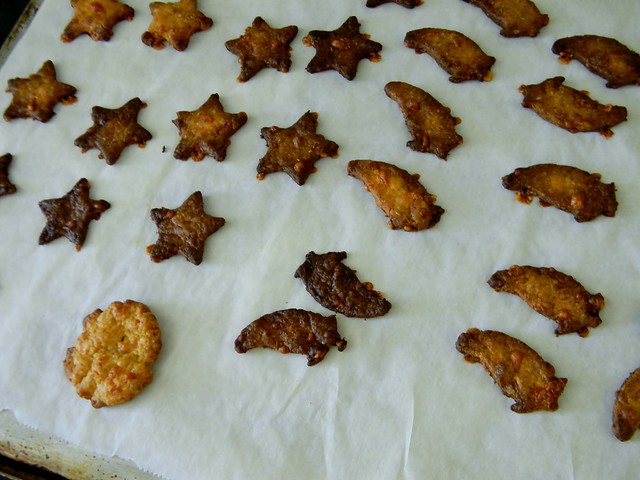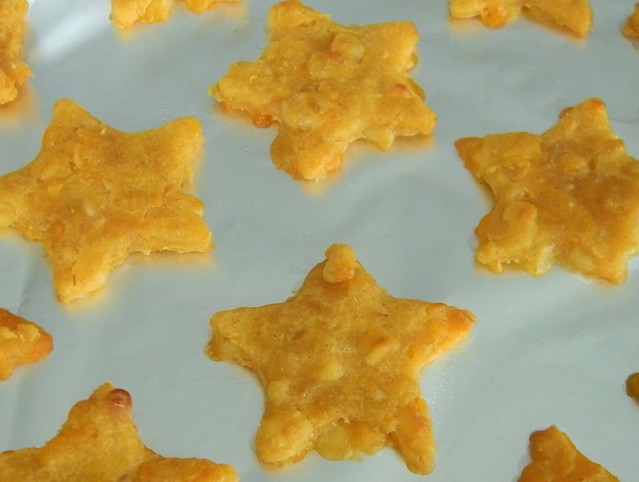Classic Snacks
Made from Scratch
Twinkies®, Cracker Jacks®, Funyuns®
and Gummi Bears– they’re the
stuff kids’ (and kid-like adults’) dreams are made of. Unfortunately, these
snacks are not only expensive, but can be packed with unnecessary fat, sodium,
calories and chemicals. Sure, pure, fresh fruit and veggies, lean proteins and
whole grains should be the order of
the day – most days. But who doesn’t like the occasional snack? Luckily we can
all now be masters of the snack cupboard thanks to Casey Barber’s new book Classic
Snacks Made from Scratch. In this book are all the secrets to recreating
all those convenience-store goodies you know while controlling the quality (and
quantity) of the ingredients.
Classic
Snacks is divided into several chapters, each focusing on a specific snack
variety. From salty and cheesy to sweet and icy, whatever your flavour you’re
sure to see something you’ll enjoy. Even if you’ve never heard of or tasted
one, how can you pass up anything as fun-sounding as a Cheese Nip®
or a Sno-Ball®? If you need more convincing, just take a look at the
accompanying photography – Judi Swinks tempts and delights the visual senses in
a way that seamlessly meshes with the clear, concise instructions to create the
feeling that anyone can make the
treats, and make them well.
 |
| Baked Nacho Cheese Doritos® (p. 67) |
Being a
product of the “candy” generation that regularly spent our pocket money on the
corner store’s confectionary offerings, looking through the pages of
Classic
Snacks was literally the experience of being “a kid in a candy store”.
While my favourite “authentic” treats (
Hostess
Cupcakes® (p.43),
Devil
Dogs® (p.58) and
Sour
Patch Kids® (p. 134)) were first to be bookmarked, my time and
pantry constraints (not to mention the fact that I was serving the outcome of
these recipes to the kids at my school) steered me into the
Cheesy Snacks and
Salty Snacks chapters. Two of the easiest-looking (and definitely
the least time-consuming) recipes were the Doritos
® clones:
Nacho Cheese Doritos® (p. 67) and
Cool Ranch Doritos® (p. 79).
Being loath to deep fry anything (and be forewarned, there is a good amount of
deep-frying in this book), I tried to “fake out” the process by oven-baking my
tortillas. Sadly, both times I tried each recipe (once with flour tortillas, as
they were all I had, and once with actual corn) the drier cooking process (even
though I brushed the wedges with oil) meant that the delicious coating mixture
of cheese powder, dried buttermilk and assorted spices didn’t stick very well,
and tasted more “floury” than the cleaner burst of flavour I remembered from
the chip bag.
It is an important note
that the recipes included in this book are not intended to be
healthy – these are, after all, copycats
of things known as “junk food”. However, the ingredients and portions are far
more easily controlled, and the artificial flavours, dyes and preservatives are
for the most part eliminated.
 |
| Over-Browned Goldfish® (p. 65) |
Undeterred
by the Doritos
® experiment
and with a decent amount of cheese powder left over (as well as March Break’s “donation”
of a part-bag of shredded cheese from school to use), I browsed the other
options and settled on one of the kids’ favourite snacks –
Goldfish® Crackers (p. 65). These were a
lot easier to make than I assumed they
would be given their elite status in lunchboxes everywhere – and the baker in
me really appreciated the “weighted” ingredient list as well as the volume
conversions. I didn’t have a fish-shaped cutter, but made a few batches of mini
stars that were a huge hit with the younger crowd. For adults, I pepped up a
batch with jalapeno and chipotle powders and cut them out with a “chile pepper”
shaped cutter, and my last batch was tinted blue and made with powdered
Parmesan and finely grated white cheddar. For any of the cracker and cookie recipes
in this book (as for any baking), the cooking times are specific to the size of
the cutter called for – I forgot this on my first round of baking (luckily only
a third of the dough) and found myself with a mixture of
very brown and downright burnt crisps as a result of my half-size
cutter. The crackers didn’t look exactly like the brand name snacks, but their
flavour was better and I liked that I could even make them with a mixture of
whole grain and all purpose flour without alienating the kids!
 |
| Perfect Goldfish® (p. 65)! |
It’s
important for readers to know that many of the recipes included in
Classic
Snacks include ingredients not easily found in the local grocery store. There
are also a few pieces of equipment and kitchen tools, as well as certain
skills, that are incredibly useful (and in some cases absolutely vital) for
making the copycat recipes. Thankfully, Barber realizes this and includes a short
but fairly comprehensive Resources guide, a list of Useful Tools and
Ingredients, and four pages of Techniques to help would be makers out.
Occasionally, tips for a specific recipe are included in that page’s footnotes,
such as where to find a specific cutter or what to do with leftover pie
filling. This keeps the book relevant not just for the moments of whimsy but
for future reference, and if a recipe is of interest to you it is worth reading
the carefully noted information.
This book
is a joy for the kid in all of us, and while nostalgic adults will want the
treats all for themselves, parents will also relish being able to provide an
occasional “junk snack” to their children without worry about the latest health
scare or high costs attached to the big brand items. Are these going to replace
broccoli and blueberries as the new Darling of nutrition? No. But Casey Barber’s
Classic Snacks Made from Scratch are worth the occasional indulgence.
Available on Amazon
 Author: Casey Barber
Author: Casey Barber


